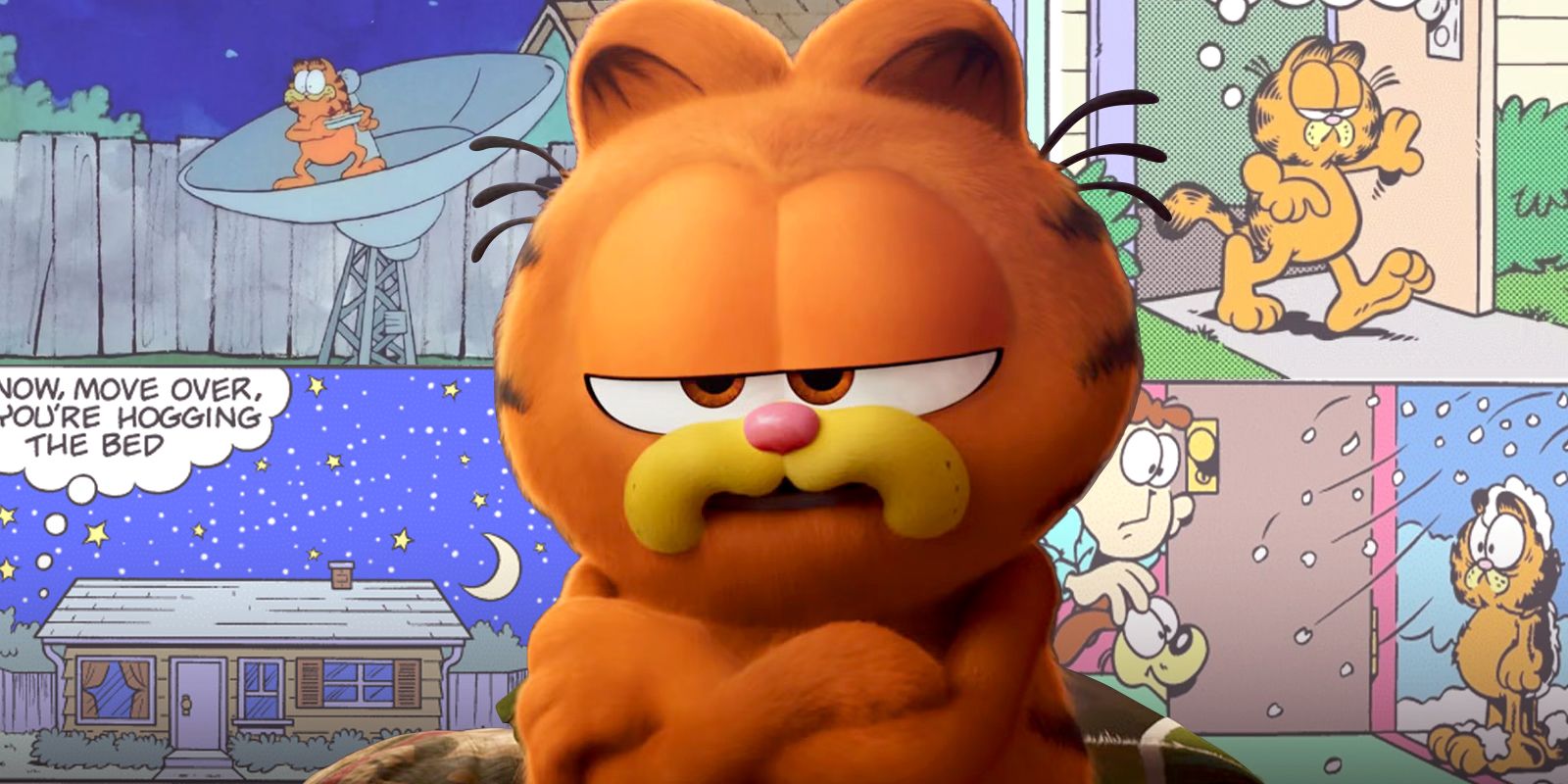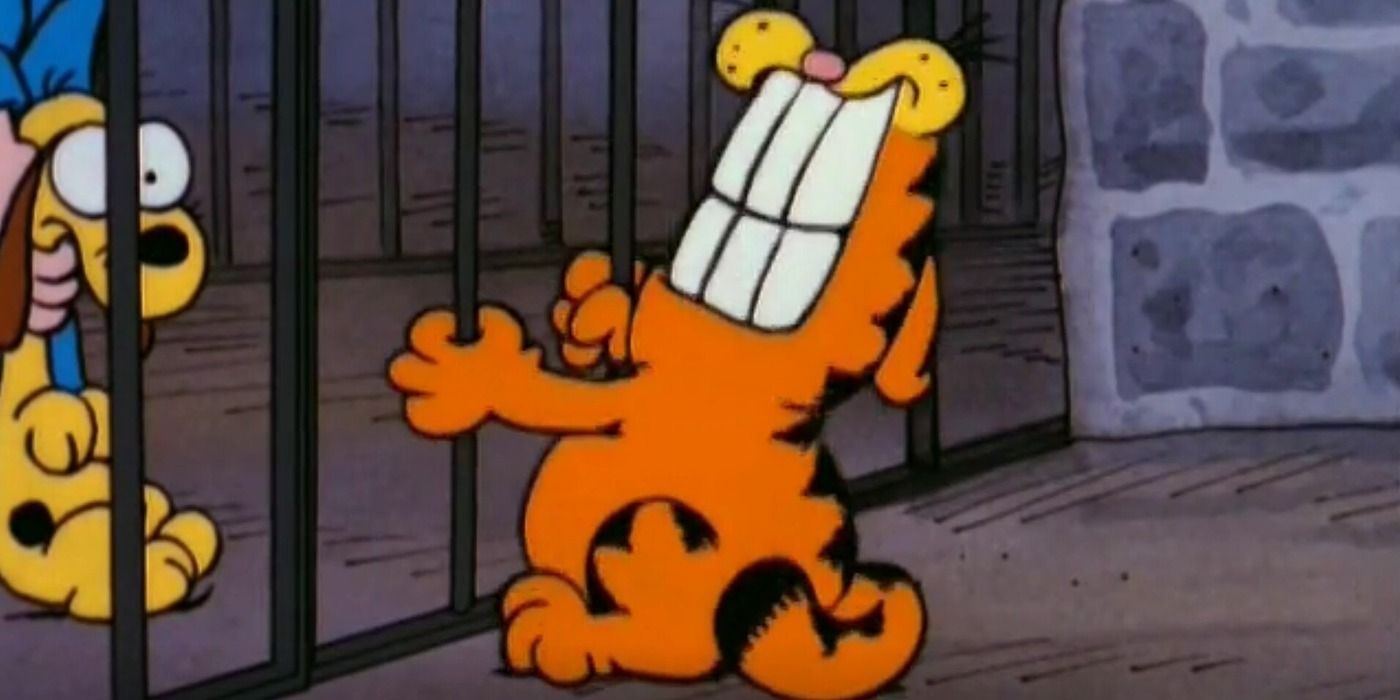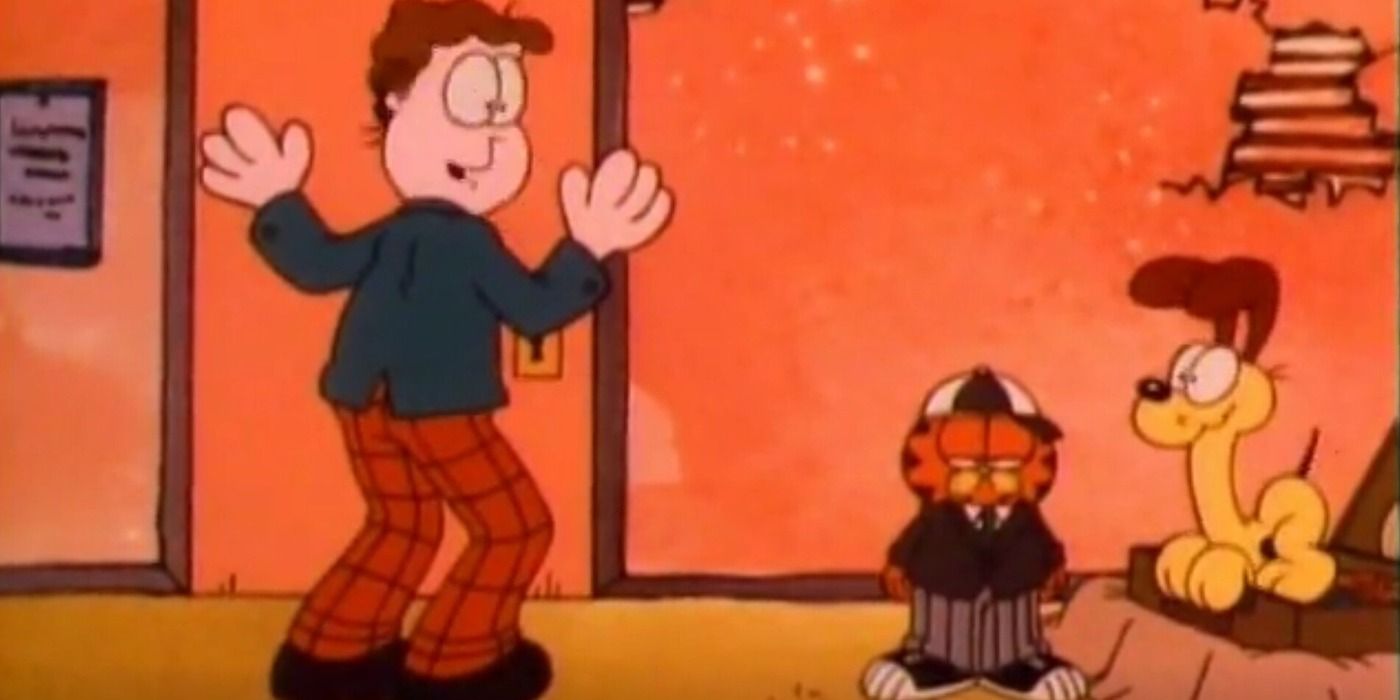
Ever since it debuted in 1978, this particular comic strip has maintained its distinctly American identity, standing tall as an undeniable cornerstone of newspaper culture and popular appeal. Unlike many other well-known American comics, however, it is not tethered to any specific location.
In comic books, settings often fall into two categories: they’re either highly detailed and fictional (like Gotham City for Batman), or they’re based on real-world locations that significantly impact the story’s mood and plot points (such as Queens for Spider-Man). However, Garfield deviates from this pattern. While debates continue about its exact location, the comic has consistently refused to be confined to a single place. Instead, it shuns specificity entirely, much like an unrefrigerated lasagna left out too long.
Where Is Garfield From?
The Answer Is More Complicated Than You Think
In over 3,000 newspapers around the globe, Garfield is consistently drawn without any specific city or identifiable landmarks. Instead, it prefers to depict an abstract, generic image of a suburban Midwest.
In simpler terms, the fact that Garfield’s world doesn’t have a specific geographical setting isn’t a sign of its lack of identity, but rather a deliberate choice to make it easily relatable for readers from any town, be it Topeka, Tampa, or Tacoma. This world invites readers to imagine themselves within it, yet it also feels oddly familiar in its ordinary details. Even The Simpsons, known for its enigmatic location, offers more specifics than Garfield does.
Jim Davis’s creation transcends any sense of location or cultural identity, eliminating regional indicators altogether. The world of Garfield isn’t just unidentifiable; it’s purposefully generic, devoid of distinctive features that could link it to a particular place. This leads to a standardized, commercially viable America – a replica of the suburbs meant for global audiences. Although the specific details may be hazy, the overall feeling – constantly fatigued, mildly annoyed, and pleasantly unexciting – consistently persists.
Garfield’s Domain: Behind The Claims, Canon, and Contradictions
The Geography Debate That Garfield Quietly Ignores





For quite some time, the lack of a specific setting for Garfield has sparked more debate than understanding. However, the most recurring fan hypothesis places the comic strip in Muncie, Indiana – a city that holds significant personal ties for creator Jim Davis, as it’s where he was born and established his initial studio.
The Wikipedia entry for Garfield states that the 1988 “Happy Birthday, Garfield” special supports this claim as evidence, but no specific source is given beyond this general reference. If Davis aimed to establish Muncie as Garfield’s hometown as well, a more explicit statement in the special or a substantiated claim on a user-generated page would be expected.
| Medium | Timeframe | Primary Setting(s) | Notes |
|---|---|---|---|
| Comic Strip | 1978–present | Suburban American home (Jon’s house) | The setting is deliberately vague and generic to appeal to a global audience. |
| Animated TV Specials | 1982–1991 | Varies: camping grounds, TV studios, vacations | Each special has its own unique, temporary setting. |
| Garfield and Friends | 1988–1994 | Jon’s house, U.S. Acres farm (in segments) | Mostly domestic; the farm is used for U.S. Acres side stories. |
| Live-action/CGI Films | 2004, 2006 | Suburban U.S. (likely Ohio), British castle (2006 sequel) | First film sticks to the suburbs; sequel moves to the UK for a “Prince and Pauper” plot. |
| 2024 Animated Film | 2024 | Urban and countryside environments | A broader, more mobile world beyond the house. |
In addition, various adjustments make the scenario more intricate. For instance, the 2004 live-action film “Garfield: The Movie,” featuring Bill Murray, was filmed in Los Angeles but asserts it takes place in Detroit, Michigan. On paper, Garfield’s residence is depicted within a Motor City apartment complex.
In the movie, he is depicted in a typical suburban neighborhood reminiscent of Southern California, despite the film’s data suggesting Detroit as the location. However, the film provides no clear links to Detroit geographically. This ambiguity isn’t just perplexing—it embodies the enigmatic essence of the Garfield character.
Garfield’s Lack of Specificity Helped Him Go Mainstream
Garfield Hates Mondays, And Naming Hometowns
Essentially, these inconsistencies strengthen the fundamental character of Garfield, which embodies clumsiness and adaptability. The absence of a fixed setting makes the comic strip applicable everywhere, aiming to capture a broad audience without limitations imposed by specific places or regional characteristics. This intentional ambiguity is not a mistake; it’s a strategic choice that has kept Garfield popular for so long.
Transformed from a simple comic strip into a vast merchandising enterprise, encompassing TV shows, stuffed toys, lunchboxes, and more – the lack of a defined hometown turned out to be a marketing bonus. Universal audiences can relate to lasagna and laziness without needing knowledge of Indiana.
Garfield transformed into an embodiment of suburban pet ownership, free from any nationalistic ties. This change also facilitated the adaptation process. The animated series seldom touched on geographically specific subjects, and the live-action movies followed suit. Even the casting choices—Bill Murray providing Garfield’s voice, Breckin Meyer portraying Jon—suggested a generic American identity without ever specifying locations on a map. The intention was to make this identity relatable and transferable worldwide rather than eliminating it entirely.
What Garfield’s Nowhere Says About American Media
Suburbia as Symbol, Absence as Access Point
As a gamer, I find myself drawn to the enigmatic detachment of Garfield’s setting. It’s not the cynicism of politics, but rather an industrial skepticism about how particularity might affect market appeal. What remains is a suburbia devoid of community spirit, local culture, and dynamic conflict. Instead, it’s been homogenized for commercial convenience. At its core, American suburbia transcends geographical location, becoming a mood: ever so slightly irritated, chronically dissatisfied, and forever near a microwave.
| Comic Strip | Named Setting | Fictionalized? | Specificity Level |
|---|---|---|---|
| Garfield | None | N/A | Non-specific suburbia |
| Peanuts | None | N/A | Mildly implied Midwest |
| Calvin & Hobbes | None | N/A | Suburban, seasonal |
| Doonesbury | Washington, D.C. | Real | High |
| The Boondocks | Suburban Woodcrest | Fictionalized | High |
| The Simpsons | Springfield | Fictionalized | Medium (intentionally vague) |
Without specifying a particular place, I might offer a more precise insight into American entertainment. Not specifying a location isn’t always an evasion; sometimes, it mirrors the audience’s pre-existing sentiments.
In an era where media is tailored for wide dissemination and worldwide appeal, it’s Garfield’s lack of a definable location that strikes a chord. His inability to be pinned down is exactly where he thrives. Garfield’s geographical flexibility, in fact, underscores an intriguing paradox in American cultural exports: often, the most successful global phenomena are those intentionally devoid of their roots. By choosing to have no fixed home, Garfield managed to achieve something extraordinary—he became a universal character, existing everywhere all at once.
Garfield‘s fictional suburban setting has persisted longer than numerous real-life American suburbs it loosely resembled. Unlike real communities which adapted to economic difficulties, demographic shifts or growth, Garfield’s constant and timeless environment remained untouched—an artifact of the late 20th-century American suburbia, kept in a state of preservation through syndication for eternity. The cat may dislike Mondays everywhere, but he doesn’t have a permanent residence—and perhaps that is what makes him most endearing.
Read More
- Silver Rate Forecast
- Gold Rate Forecast
- Former SNL Star Reveals Surprising Comeback After 24 Years
- USD CNY PREDICTION
- Black Myth: Wukong minimum & recommended system requirements for PC
- Grimguard Tactics tier list – Ranking the main classes
- 10 Most Anticipated Anime of 2025
- Arknights celebrates fifth anniversary in style with new limited-time event
- Hero Tale best builds – One for melee, one for ranged characters
- Box Office: ‘Jurassic World Rebirth’ Stomping to $127M U.S. Bow, North of $250M Million Globally
2025-05-04 19:28